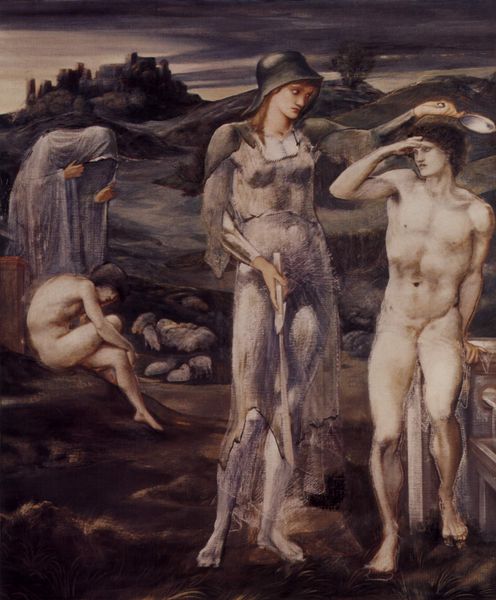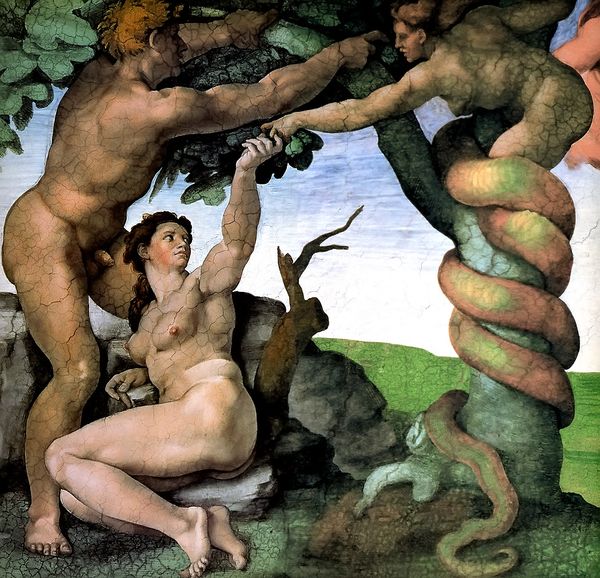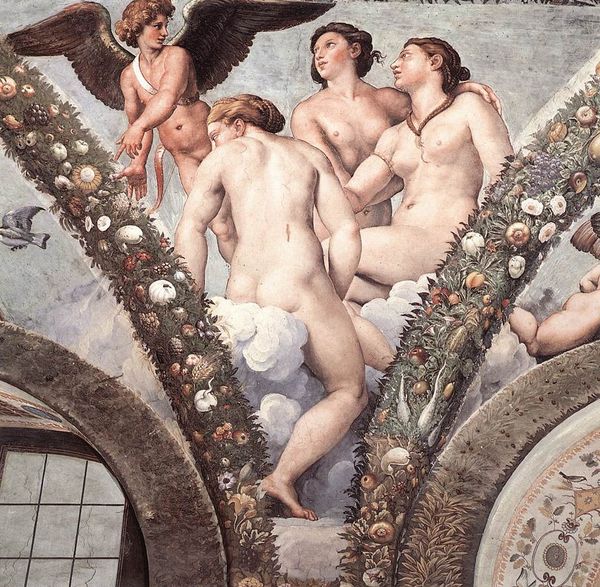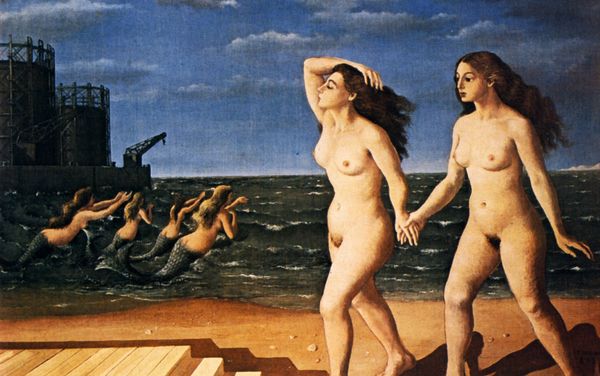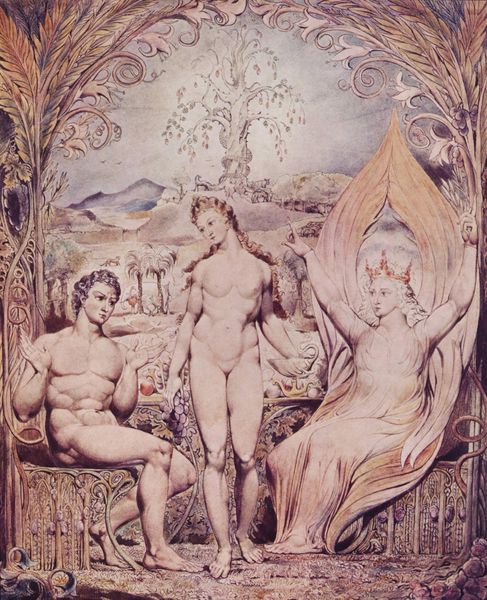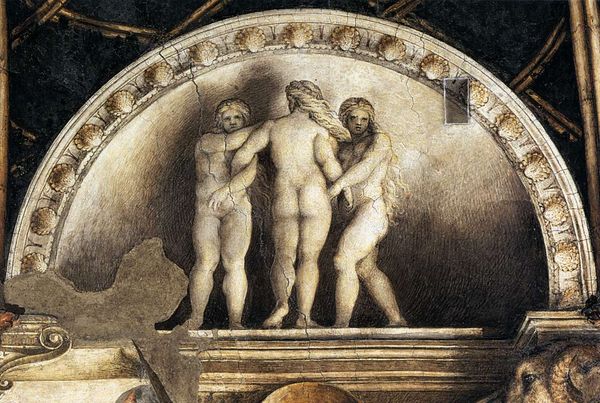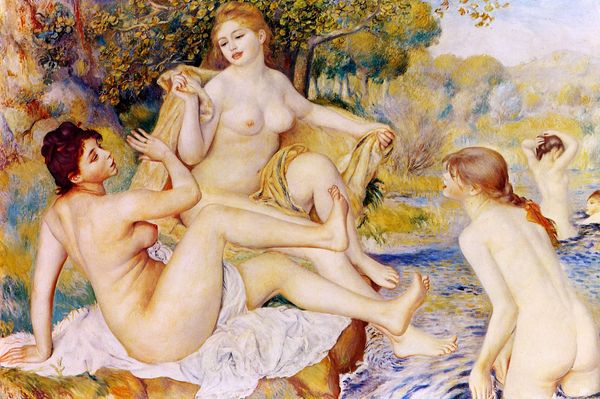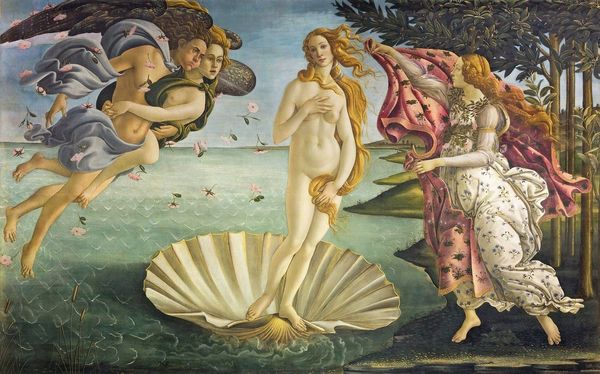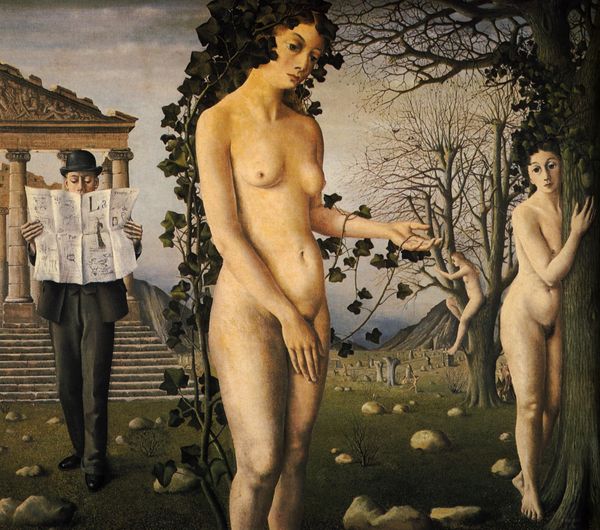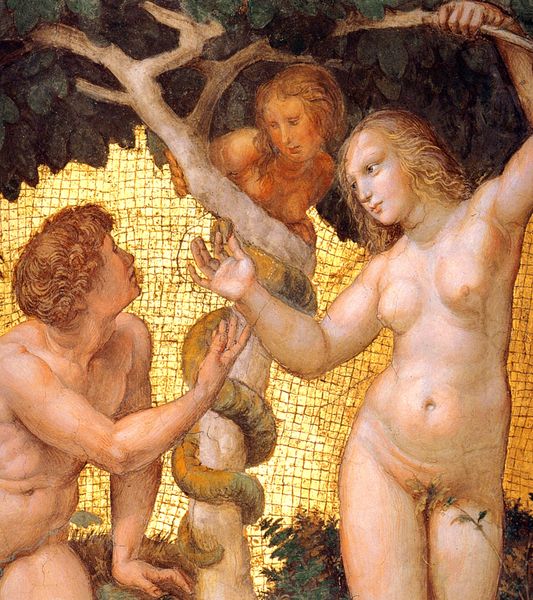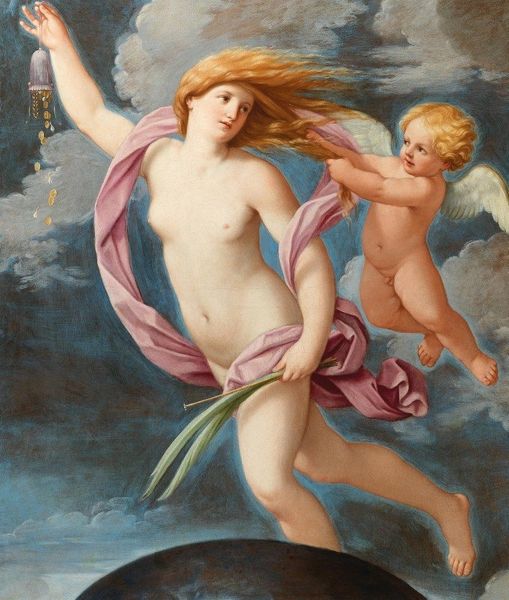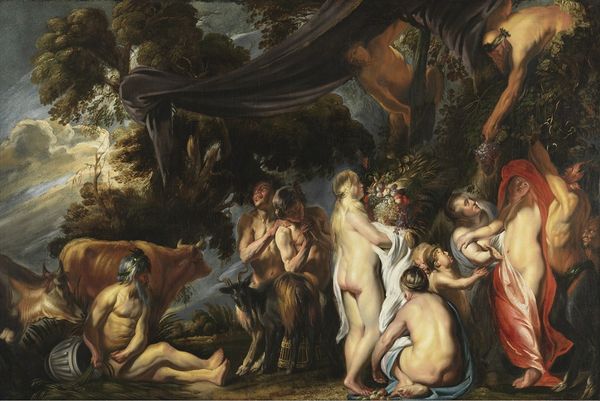
painting, plein-air, oil-paint, impasto
#
allegory
#
painting
#
plein-air
#
oil-paint
#
landscape
#
figuration
#
11_renaissance
#
oil painting
#
impasto
#
mythology
#
symbolism
#
history-painting
#
pre-raphaelites
#
nude
#
realism
Copyright: Public Domain: Artvee
Curator: Edward Burne-Jones, a central figure in the second phase of the Pre-Raphaelite movement, created this oil painting titled "Perseus and Andromeda" in 1876. Editor: It feels theatrical, doesn't it? Like a beautifully posed tableau vivant, all hushed tones and dramatic tension before the grand finale. The scale and positioning are perfect! It's weird, I want to lean in to hear what these folks are whispering! Curator: Indeed, Burne-Jones was known for drawing from literary and mythological sources. This scene, depicting the rescue of Andromeda by Perseus, allowed him to explore themes of heroism and sacrifice, common in the Victorian era but framed in classical narratives. Editor: I'm drawn to the colors—or lack thereof! They’re like faded memories, giving the whole scene a kind of ethereal quality. It's almost as if he drained all the vibrancy on purpose! The muted palette really intensifies the focus on their pale figures! Curator: He wasn't concerned with naturalism but creating dreamlike narratives loaded with symbolism and aesthetic value. It challenged Victorian ideas about the roles of women, presenting Andromeda in a passive, vulnerable position as a victim. Editor: Vulnerable but also statuesque—look at her posture. Is that resistance in those tired eyes? Burne-Jones knew how to tell a story with his poses! What's also neat is the contrast! A vulnerable maiden versus this beast is perfect storytelling! Curator: Burne-Jones became part of the Pre-Raphaelite circle because he wanted to challenge the established art of his day, influenced by Romanticism but still focused on social critique. The picture itself then speaks to anxieties regarding social power. Editor: So he was sort of pushing the cultural buttons of the time? A lot of artists from back in the day do the same! I think he definitely delivered! The picture definitely delivers tension! It almost feels contemporary. I could stare for hours! Curator: By bringing these classical tales to life in a modern visual language, he certainly hoped to shape—and challenge—the ethical landscape of Victorian society. Thanks for highlighting some details for a deeper interpretation! Editor: My pleasure! It is always so refreshing to engage with works that resonate beyond time! I need to ponder some of that resistance for sure.
Comments
No comments
Be the first to comment and join the conversation on the ultimate creative platform.
